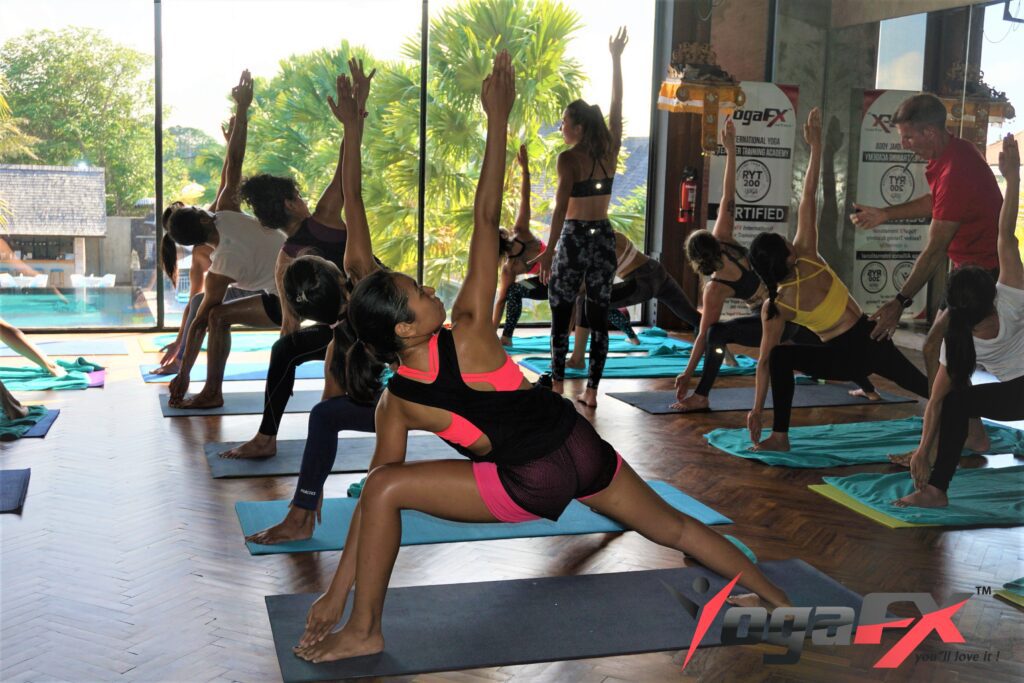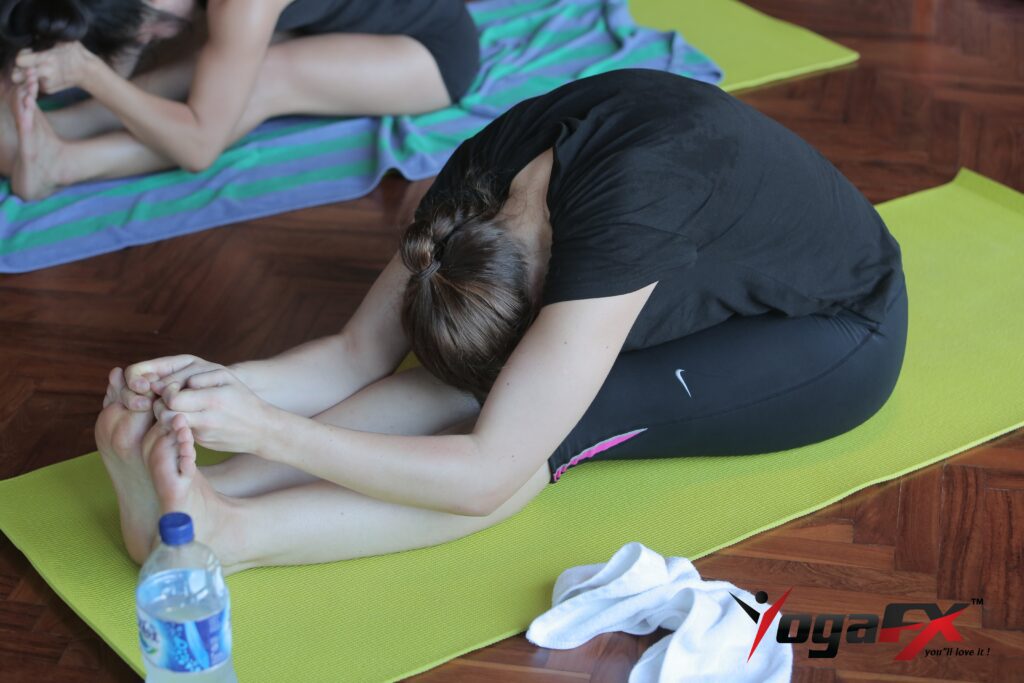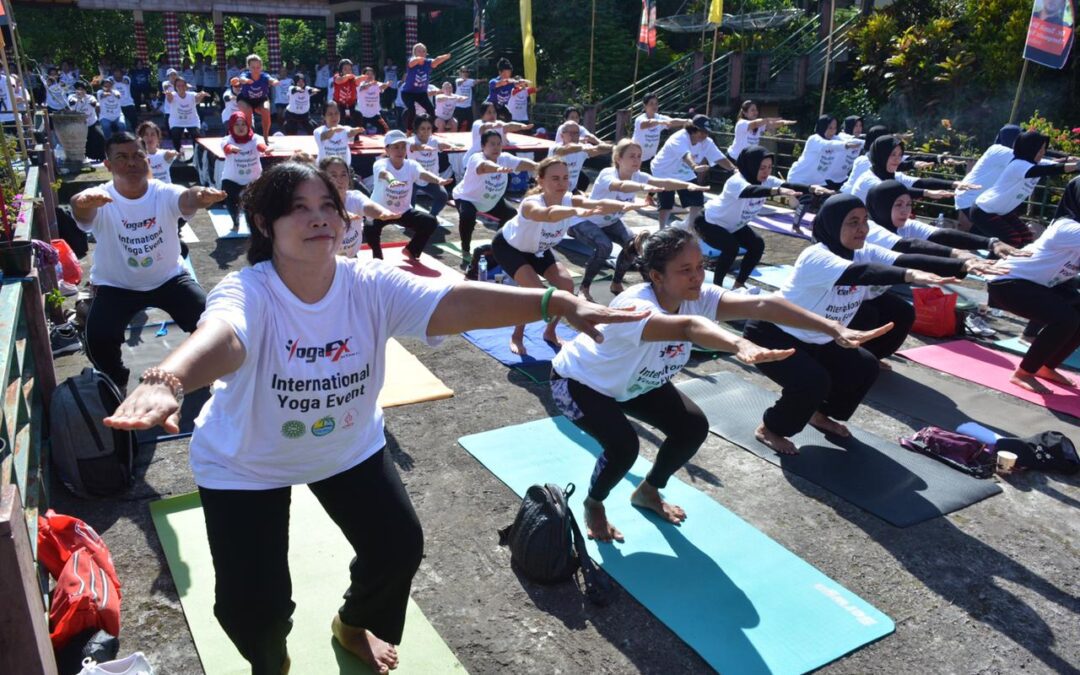Bikram Yoga, also known as hot yoga or 26 and 2 yoga, is a dynamic and transformative practice that combines a specific sequence of 26 postures and 2 breathing exercises. Developed by Bikram Choudhury in the 1970s, this style of yoga is practiced in a heated room, typically maintained at around 105 degrees Fahrenheit with a humidity of 40%. The intensity of the heat amplifies the benefits of the practice, allowing practitioners to deepen their stretches, build strength, and find mental focus. In this article, we will explore the world of Bikram Yoga poses, understand its benefits, and even delve into the realm of Bikram Yoga teacher training.

The Science Behind Bikram Yoga Poses
The heated environment in Bikram Yoga serves a purpose beyond creating a sweaty atmosphere. The heat warms the muscles, making them more pliable and less prone to injury. As your body temperature rises, your blood vessels dilate, improving circulation and allowing oxygen to reach your muscles more efficiently. This enhanced blood flow facilitates the delivery of nutrients and the removal of waste products, promoting faster recovery and healing.
Moreover, the heat in Bikram Yoga intensifies the detoxification process. As you sweat profusely, toxins are flushed out of your system, leaving you feeling rejuvenated and refreshed. The combination of heat, deep stretching, and controlled breathing also aids in weight management, as the elevated heart rate and increased metabolic rate contribute to calorie burn.
“Doing Work In The Moment Of Now”
Essential Bikram Yoga Poses
Bikram Yoga follows a specific sequence of 26 poses and 2 breathing exercises, designed to work every part of the body. Here are the 26 essential Bikram Yoga poses:
1. Pranayama Breathing:
Begin your practice with deep breathing exercises to calm the mind and connect with your breath.
2. Half Moon Pose (Ardha-Chandrasana with Pada-Hastasana):
A standing pose that stretches and strengthens the entire body.
3. Awkward Pose (Utkatasana):
Strengthens the lower body, particularly the thighs and glutes.
4. Eagle Pose (Garurasana):
Improves balance, stretches the shoulders and hips.
5. Standing Head to Knee Pose (Dandayamana-Janushirasana):
Increases flexibility in the hamstrings and improves balance.
6. Standing Bow Pose (Dandayamana-Dhanurasana):
Enhances spinal flexibility, strengthens the legs, and improves balance.
7. Balancing Stick Pose (Tuladandasana):
Improves balance, builds core strength, and increases overall body awareness.
8. Standing Separate Leg Stretching Pose (Dandayamana-Bibhaktapada-Paschimotthanasana):
Stretches the hamstrings, calves, and lower back.
9. Triangle Pose (Trikanasana):
Opens the hips, stretches the legs, and strengthens the core.
10. Standing Separate Leg Head to Knee Pose (Dandayamana-Bibhaktapada-Janushirasana):
Stretches the hamstrings, calves, and lower back.
11. Tree Pose (Tadasana):
Improves balance and concentration while strengthening the legs and ankles.
12. Toe Stand Pose (Padangustasana):
Strengthens the legs and improves balance.
13. Dead Body Pose (Savasana):
A pose of relaxation and integration, allowing the body to rest and rejuvenate.
14. Wind Removing Pose (Pavanamuktasana):
A reclining pose that stretches the lower back and massages the abdominal organs.
15. Sit-up Pose (Pada-Hastasana):
Engages the core muscles and promotes spinal flexibility.
16. Cobra Pose (Bhujangasana):
Strengthens the back muscles and improves spinal flexibility.
17. Locust Pose (Salabhasana):
Tones the muscles of the back, buttocks, and legs.
18. Full Locust Pose (Poorna-Salabhasana):
Further strengthens the back muscles and improves posture.
19. Bow Pose (Dhanurasana):
Opens the chest and shoulders, strengthens the back, and stretches the front of the body.
20. Fixed Firm Pose (Supta-Vajrasana):
Stretches the thighs, knees, and ankles, and promotes flexibility in the lower body.
21. Half Tortoise Pose (Ardha-Kurmasana):
A forward bend that stretches the spine, shoulders, and hips, while calming the mind.
22. Camel Pose (Ustrasana):
Opens the chest, strengthens the back, and improves spinal flexibility.
23. Rabbit Pose (Sasangasana):
Stretches the spine, shoulders, and neck, and improves digestion.
24. Head to Knee Pose with Stretching Pose (Janushirasana with Paschimotthanasana):
Stretches the entire back of the body, including the hamstrings and calves.
25. Spine Twisting Pose (Ardha-Matsyendrasana):
Increases spinal flexibility, massages the abdominal organs, and improves digestion.
26. Blowing in Firm Pose (Kapalbhati in Vajrasana):
A breathing exercise that energizes the body and clears the mind.

Benefits of Practicing Bikram Yoga Poses
The practice of Bikram Yoga offers numerous benefits for both the body and mind. Physically, regular practice can lead to improved flexibility, strength, and posture. The deep stretches in each pose help to lengthen and strengthen the muscles, while the heat aids in the release of tension and promotes deeper stretches.
Bikram Yoga is also known for its cardiovascular benefits. The combination of the heat and the dynamic sequence increases the heart rate, improving cardiovascular health and stamina. Additionally, the practice stimulates the lymphatic system, which helps in detoxification and boosts the immune system.
On a mental and emotional level, Bikram Yoga cultivates mindfulness and reduces stress. The heat and intensity of the practice require focused attention, allowing practitioners to be fully present in the moment. As you become more attuned to your body and breath, you’ll experience a sense of calm and clarity.
Precautions and Tips for a Safe Practice
While Bikram Yoga can be a transformative practice, it’s crucial to approach it with caution and respect for your body’s limits. Here are some precautions and tips to keep in mind:
1. Stay Hydrated:
Drink plenty of water before, during, and after class to maintain proper hydration levels.
2. Nourish Your Body:
Fuel yourself with nutrient-rich foods to support your practice and aid in muscle recovery.
3. Listen to Your Body:
Pay attention to any discomfort or pain during the practice and modify poses accordingly. It’s essential to distinguish between sensation and pain.
4. Gradual Progression:
Allow your body to adapt gradually to the heat and the poses. Avoid pushing yourself beyond your limits too quickly.
Bikram Yoga Teacher Training
For those passionate about sharing the benefits of Bikram Yoga, becoming a certified Bikram Yoga teacher is a fulfilling journey. Mr. Ian, founder of YogaFX, offers a comprehensive Yoga Alliance certified Bikram Hot YogaFX teacher training program. This intensive training equips you with the knowledge and skills to lead safe and effective Bikram Yoga classes. With the flexibility of online training, you can embark on this transformative path from the comfort of your own home. Visit the YogaFX website to explore the teacher training opportunities and take the first step towards becoming a certified Bikram Yoga teacher.

Conclusion
Bikram Yoga poses offer a powerful and holistic approach to physical and mental well-being. The combination of heat, specific sequences, and deep stretches creates a transformative practice that enhances strength, flexibility, and mindfulness. Whether you are a beginner or an experienced yogi, incorporating Bikram Yoga into your routine can lead to a wide range of benefits.
If you’re inspired to share the transformative power of Bikram Yoga, consider enrolling in a Bikram Yoga teacher training program. With options for online training, such as the Yoga Alliance certified Bikram Hot YogaFX teacher training by Mr. Ian at YogaFX, you can embark on a fulfilling journey of guiding others on their own yoga path. Embrace the heat, embrace the challenge, and discover the incredible rewards that Bikram Yoga poses have to offer.

